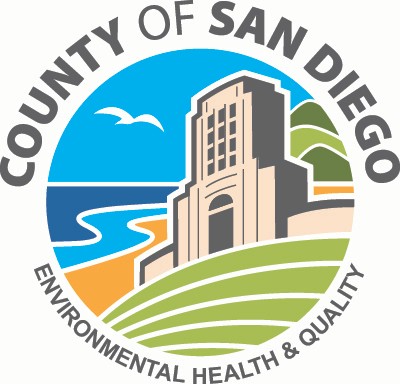There are two types of hazardous materials
releases that must be reported; a threatened release and a
significant release. A threatened release is not a
release. It is a condition that creates a substantial
probability of harm and makes it reasonably necessary to take
immediate action to prevent, reduce, or mitigate damages to
persons, property, or the environment. For example:
- A hazardous material or waste storage tank becomes
unstable, and it begins to tilt off center or lean to one
side. The tank is in danger of falling over and releasing
its contents to the floor or ground.
- A valve on a
tank or on piping has corroded and it could fail under
normal operating conditions.
A significant
release is subjective. All significant releases must be
reported.
Whether a release is significant depends on a
variety of factors, including the following: the amount, the
hazardousness of the material or waste, and/or the proximity
of sensitive receptors such as schools, nursing homes, etc.
See checklist below for examples of reportable and
non-reportable releases. Additional guidance can be found on
the Release
Reporting Requirements Matrix found on the CalOES
website. This matrix summarizes pertinent emergency
notification requirements.
| Reporting
a release |
After the initial immediate measures
have been taken to protect human health and the
environment, report the release at once to the
following agencies in accordance with State and
Federal law. The Department of Environmental Health
and Quality collaborated with the Industrial
Environmental Association and representatives from
local businesses to develop this release
reporting assessment tool and incident recording
form to assist businesses with the requirement to
immediately report significant releases of hazardous
materials. The form can assist businesses in
documenting why a release was not reportable. Always
use the County of San Diego tool in conjunction with
the CalOES Release
Reporting Book. - Call 911 for
emergency assistance. This usually results in a fire
department response
- Call California
Office of Emergency Services (Cal OES),
800-852-7550.
- Call the local CUPA (HMD) at
858-505-6657.
- If a release exceeds the
federal reportable quantity (RQ), call the National
Response Center (NRC), 800-424-8802.
Mandatory release reports:
A release of
a reportable quantity (RQ) of a hazardous material
must be reported. RQs are listed in the CERCLA “List of
Lists”. This document is maintained by the United
States Environmental Protection Agency. Another way
to determine if a RQ has been exceeded is to use the
Department of
Energy’s online RQ calculator. NOTE: ensure that
adequate and appropriate spill containment and
mitigation equipment is on hand. It is advisable to
periodically check all the hazardous materials stored
or used at a facility. Determine the RQs and likely
release reporting scenarios in advance. This
information could be included in the facility release
reporting notification procedures. Flow charts or a
list of questions might aid facility personnel in this
task.
Determining if a release is reportable:
These sample questions can be used to determine
if a release is reportable:
- Is it
a hazardous material? This can be any hazardous
substance used in your business or any hazardous
waste that is generated by your business.
- Is there a threatened release?
- Was it
necessary to take immediate action to prevent,
reduce, or mitigate damages to persons, property, or
the environment?
- Is there an actual
significant release?
- Is the release
reportable per federal or state laws and/or
regulations?
Examples of significant releases:
- Hazardous material release that
exceed RQ, or
- Result in an emergency
response, or
- Cause injury, or
- Go
offsite, or
- Are released into the
environment.
Examples of releases that may not need to be reported:
- Present no health or safety
hazard, or
- Do not harm the environment,
or
- Do not enter the atmosphere, or
- Are completely contained onsite, or
- Are completely recovered or removed quickly,
or
- Do not require additional PPE to be
worn.
How to follow up after a release:
- Revise the initial release report as necessary
to accurately portray the situation.
- Review
and revise release response plans if they were not
completely effective tools during the
emergency.
For additional hazardous
materials release reporting information, call the Hazardous Materials Duty
Desk at 858-505-6880. |
|






